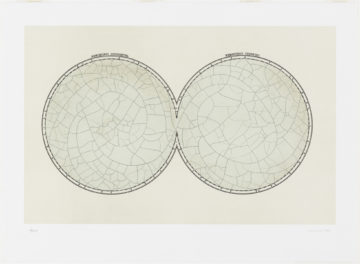John Bistline, Inês Azevedo, Chris Bataille and Steven Davis in the New York Times:
 The Intergovernmental Panel on Climate Change report, which was released last week and which we co-authored with many colleagues, offers hope for limiting global warming.
The Intergovernmental Panel on Climate Change report, which was released last week and which we co-authored with many colleagues, offers hope for limiting global warming.
But there is no time to waste. And wasted time includes time spent debating issues that divert us from our most important priorities right now.
Unfortunately, debates about distant future decisions and future uncertainties are distracting advocates, policymakers, researchers and the public from their shared, near-term goals. At best, these disputes give observers — especially policymakers and their advisers, who are trying to make tough short-term decisions during a global energy security crisis — a misleading impression that experts disagree about effective steps to decarbonize energy systems. At worst, these disputes can stall progress by delaying policies and incentives that would accelerate clean energy deployment.
More here.

 Over the years, I’ve read quite a few books about the brain, most of them written by academic neuroscientists who view it through the lens of sophisticated lab experiments. Recently, I picked up a brain book that’s much more theoretical. It’s called A Thousand Brains: A New Theory of Intelligence, by a tech entrepreneur named Jeff Hawkins.
Over the years, I’ve read quite a few books about the brain, most of them written by academic neuroscientists who view it through the lens of sophisticated lab experiments. Recently, I picked up a brain book that’s much more theoretical. It’s called A Thousand Brains: A New Theory of Intelligence, by a tech entrepreneur named Jeff Hawkins. R
R In 2017, Karen Kostroff, a renowned oncology surgeon at Northwell Health in the New York Metropolitan area added a new talking point to her standard conversation with breast cancer patients facing tumor removal surgery. These conversations are never easy, because a cancer diagnosis is devastating news. But the new topic seemed to give her patients a sense of purpose, a feeling that their medical misfortune had the potential to do something good for other people.
In 2017, Karen Kostroff, a renowned oncology surgeon at Northwell Health in the New York Metropolitan area added a new talking point to her standard conversation with breast cancer patients facing tumor removal surgery. These conversations are never easy, because a cancer diagnosis is devastating news. But the new topic seemed to give her patients a sense of purpose, a feeling that their medical misfortune had the potential to do something good for other people.  Alex Kane in Jewish Currents:
Alex Kane in Jewish Currents: Daniel J Herman in Aeon:
Daniel J Herman in Aeon: Over at Phenomenal World, Lily Hu interviews Olúfẹ́mi Táíwò on climate crisis, reparations, and the use of history:
Over at Phenomenal World, Lily Hu interviews Olúfẹ́mi Táíwò on climate crisis, reparations, and the use of history: A
A “Private Notebooks: 1914-1916” is a strange and intriguing record — illuminating when it comes to Wittgenstein’s preoccupations, his sexual anguish, his continuous struggles with his “work” in philosophy, along with his intermittent comments about his “job” in the military. (Like other writings by Wittgenstein that have been published posthumously, “Private Notebooks” is a bilingual edition, with German and English printed on facing pages.) Perloff also points out that unlike so many other war diaries, Wittgenstein’s includes very little about the larger stakes of the war itself. One exception is an entry that reads like a startlingly cheerful declaration that his own side was doomed: “The English — the best race in the world — cannot lose! We, however, can lose & will lose, if not this year, then the next!”
“Private Notebooks: 1914-1916” is a strange and intriguing record — illuminating when it comes to Wittgenstein’s preoccupations, his sexual anguish, his continuous struggles with his “work” in philosophy, along with his intermittent comments about his “job” in the military. (Like other writings by Wittgenstein that have been published posthumously, “Private Notebooks” is a bilingual edition, with German and English printed on facing pages.) Perloff also points out that unlike so many other war diaries, Wittgenstein’s includes very little about the larger stakes of the war itself. One exception is an entry that reads like a startlingly cheerful declaration that his own side was doomed: “The English — the best race in the world — cannot lose! We, however, can lose & will lose, if not this year, then the next!”
 A work of art has the power to transport its viewer to another time and place. Now, the
A work of art has the power to transport its viewer to another time and place. Now, the  Policies to make police forces more representative of communities have centered on race. But race may crudely proxy views and lived experiences, undermining classic theories of representative bureaucracy. To conduct a multi-dimensional analysis, we merge personnel records, voter files and census data to examine roughly 220,000 officers from 97 of the 100 largest local U.S. agencies—over one third of local law enforcement agents nationwide. We show officers skew more White, Republican, politically active, male, and high-income than their jurisdictions; they also surround themselves with similarly unrepresentative neighbors. In a quasi-experimental analysis in Chicago, we find Democratic and minority officers initiate fewer stops, arrests, and uses of force than Republican and White counterparts facing common circumstances. The Black-White behavioral gap is often far larger than the Democratic-Republican gap, a pattern not observed among Hispanic officers. Our results complicate conventional understandings of descriptive representation, highlighting the importance of multi-dimensional perspectives of diversity.
Policies to make police forces more representative of communities have centered on race. But race may crudely proxy views and lived experiences, undermining classic theories of representative bureaucracy. To conduct a multi-dimensional analysis, we merge personnel records, voter files and census data to examine roughly 220,000 officers from 97 of the 100 largest local U.S. agencies—over one third of local law enforcement agents nationwide. We show officers skew more White, Republican, politically active, male, and high-income than their jurisdictions; they also surround themselves with similarly unrepresentative neighbors. In a quasi-experimental analysis in Chicago, we find Democratic and minority officers initiate fewer stops, arrests, and uses of force than Republican and White counterparts facing common circumstances. The Black-White behavioral gap is often far larger than the Democratic-Republican gap, a pattern not observed among Hispanic officers. Our results complicate conventional understandings of descriptive representation, highlighting the importance of multi-dimensional perspectives of diversity.